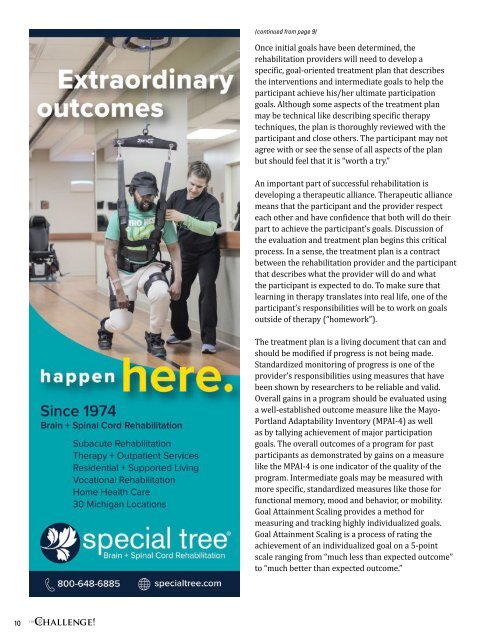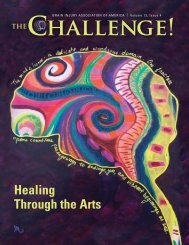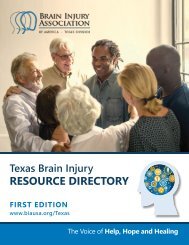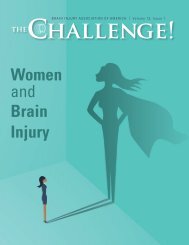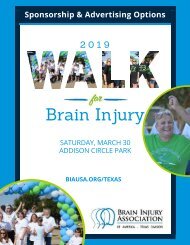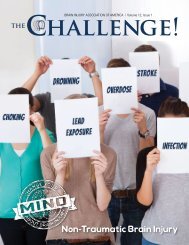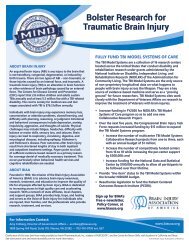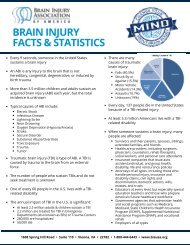THE Challenge 2019 Vol. 13 Iss. 3 Finding Cures for Brain Injury
Finding Cures for Brain Injury
Finding Cures for Brain Injury
Create successful ePaper yourself
Turn your PDF publications into a flip-book with our unique Google optimized e-Paper software.
(continued from page 9)<br />
Once initial goals have been determined, the<br />
rehabilitation providers will need to develop a<br />
specific, goal-oriented treatment plan that describes<br />
the interventions and intermediate goals to help the<br />
participant achieve his/her ultimate participation<br />
goals. Although some aspects of the treatment plan<br />
may be technical like describing specific therapy<br />
techniques, the plan is thoroughly reviewed with the<br />
participant and close others. The participant may not<br />
agree with or see the sense of all aspects of the plan<br />
but should feel that it is “worth a try.”<br />
An important part of successful rehabilitation is<br />
developing a therapeutic alliance. Therapeutic alliance<br />
means that the participant and the provider respect<br />
each other and have confidence that both will do their<br />
part to achieve the participant’s goals. Discussion of<br />
the evaluation and treatment plan begins this critical<br />
process. In a sense, the treatment plan is a contract<br />
between the rehabilitation provider and the participant<br />
that describes what the provider will do and what<br />
the participant is expected to do. To make sure that<br />
learning in therapy translates into real life, one of the<br />
participant’s responsibilities will be to work on goals<br />
outside of therapy (“homework”).<br />
The treatment plan is a living document that can and<br />
should be modified if progress is not being made.<br />
Standardized monitoring of progress is one of the<br />
provider’s responsibilities using measures that have<br />
been shown by researchers to be reliable and valid.<br />
Overall gains in a program should be evaluated using<br />
a well-established outcome measure like the Mayo-<br />
Portland Adaptability Inventory (MPAI-4) as well<br />
as by tallying achievement of major participation<br />
goals. The overall outcomes of a program <strong>for</strong> past<br />
participants as demonstrated by gains on a measure<br />
like the MPAI-4 is one indicator of the quality of the<br />
program. Intermediate goals may be measured with<br />
more specific, standardized measures like those <strong>for</strong><br />
functional memory, mood and behavior, or mobility.<br />
Goal Attainment Scaling provides a method <strong>for</strong><br />
measuring and tracking highly individualized goals.<br />
Goal Attainment Scaling is a process of rating the<br />
achievement of an individualized goal on a 5-point<br />
scale ranging from “much less than expected outcome”<br />
to “much better than expected outcome.”<br />
10


